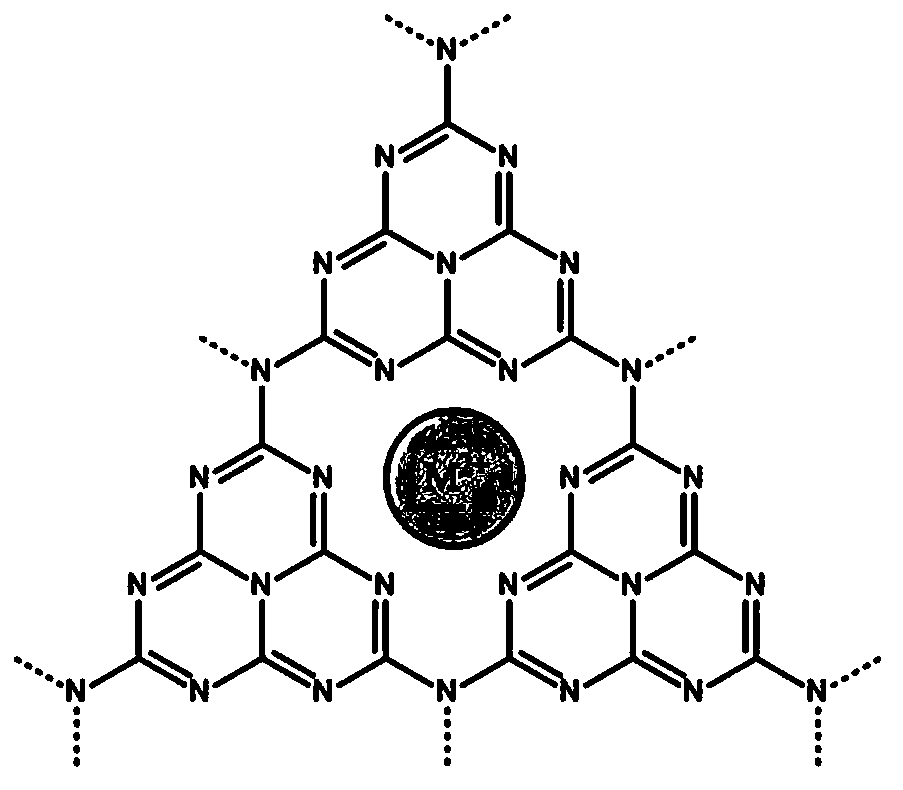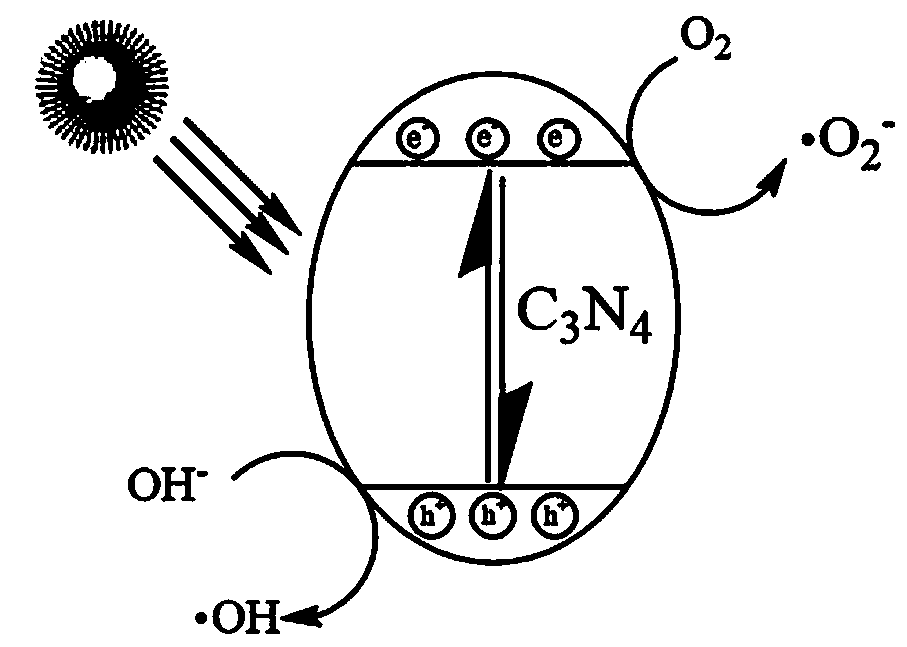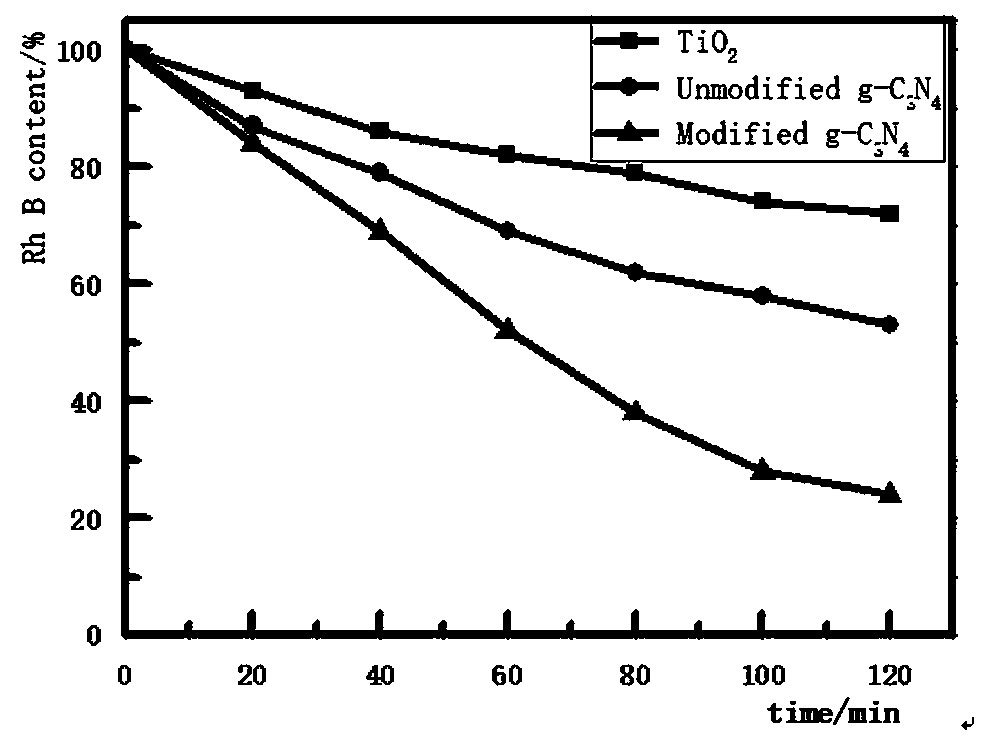Photoresponse self-cleaning coating and preparation method thereof
A self-cleaning, light-responsive technology, applied in the field of coatings, can solve the problem of limited light-response range and achieve the effect of improving photocatalytic activity
- Summary
- Abstract
- Description
- Claims
- Application Information
AI Technical Summary
Problems solved by technology
Method used
Image
Examples
Embodiment 1
[0033] (1) Metal modified g-C 3 N 4 :
[0034] 1) Prepare 10ml (0.5wt%) CaCl 2 The solution was put into 20g melamine sample, stirred evenly and heated at 60℃ to evaporate the water;
[0035] 2) Weigh 10g of the processed sample at room temperature, add it to the crucible and put it into the muffle furnace at a temperature rise rate of 5℃·min -1 Heated to 530℃, kept at this temperature for 3h, and then naturally cooled to room temperature to obtain calcium metal doped and modified g-C 3 N 4 powder;
[0036] (2) Preparation of composite coating:
[0037] 1) Take 200 parts of water-based epoxy resin and 200 parts of water;
[0038] 2) Take 20 parts of calcium metal doped and modified g-C 3 N 4 Add to the above resin system and disperse in a ball mill for 2 hours;
[0039] 3) Take 20 parts of water-based curing agent and 50 parts of water and mix evenly; mix the mother liquor of the water-based epoxy composite paint and the diluted water-based curing agent in a ratio of 3:1 to coat the subs...
Embodiment 2
[0042] (1) Metal modified g-C 3 N 4 :
[0043] 1) Prepare 15ml (0.5wt%) CaCl 2 The solution was put into 30g melamine sample, stirred evenly and heated at 60℃ to evaporate the water;
[0044] 2) Weigh 20g of the processed sample at room temperature, add it to the crucible and put it into the muffle furnace at a temperature rise rate of 10℃·min -1 Heat to 550℃, keep it at this temperature for 4h, and then cool to room temperature naturally to obtain calcium metal doped and modified g-C 3 N 4 powder;
[0045] (2) Preparation of composite coating:
[0046] 1) Take 250 parts of water-based epoxy resin and 250 parts of water;
[0047] 2) Take 30 parts of calcium metal doped and modified g-C 3 N 4 Add to the above resin system and disperse in a ball mill for 2 hours;
[0048] 3) Take 30 parts of water-based curing agent and 80 parts of water and mix uniformly; mix the mother liquor of the water-based epoxy composite paint and the diluted water-based curing agent in a ratio of 4:1 to coat the s...
Embodiment 3
[0051] (1) Metal modified g-C 3 N 4 :
[0052] 1) Prepare 20ml (0.5wt%) CaCl 2 The solution was put into 40g melamine sample, stirred evenly and heated at 60℃ to evaporate the water;
[0053] 2) Weigh 30g of the processed sample at room temperature, add it to the crucible and put it into the muffle furnace at a temperature rise rate of 20℃·min -1 Heat to 600℃, keep it at this temperature for 6h and then cool to room temperature naturally to obtain calcium metal doped and modified g-C 3 N 4 powder;
[0054] (2) Preparation of composite coating:
[0055] 1) Take 200 parts of water-based epoxy resin and 300 parts of water;
[0056] 2) Take 40 parts of calcium metal doped and modified g-C 3 N 4 Add to the above resin system and disperse in a ball mill for 2 hours;
[0057] 3) Take 40 parts of water-based curing agent and 100 parts of water and mix evenly; mix the mother liquor of the water-based epoxy composite paint and the diluted water-based curing agent in a ratio of 5:1 to coat the subs...
PUM
 Login to View More
Login to View More Abstract
Description
Claims
Application Information
 Login to View More
Login to View More - R&D
- Intellectual Property
- Life Sciences
- Materials
- Tech Scout
- Unparalleled Data Quality
- Higher Quality Content
- 60% Fewer Hallucinations
Browse by: Latest US Patents, China's latest patents, Technical Efficacy Thesaurus, Application Domain, Technology Topic, Popular Technical Reports.
© 2025 PatSnap. All rights reserved.Legal|Privacy policy|Modern Slavery Act Transparency Statement|Sitemap|About US| Contact US: help@patsnap.com



